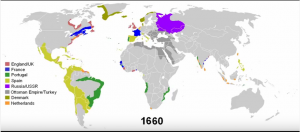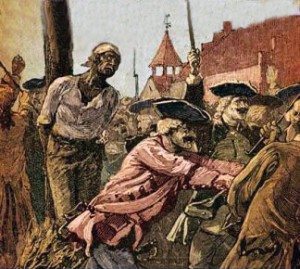by Mollie Baruch, Rohit Purma, Tristan Rosengart, Ed Zaleck
Section 05
This object is a legal code. It does not physically exist but it has a powerful presence in the Dutch legal code and American history. The law, implemented by the West India Company in 1644, said that the children of free black adults were obligated to work the WIC themselves. The parents would baptize their children in the hopes that the WIC would not turn Christian children into slaves. However, in the mid 1650s, the Dutch clergy stopped baptizing slave children and there was a rigid distinction between slave religion and white religion.
. 

The 1644 legal code is located within the colonies of the Dutch. It is located there because there was an already rigid legal system of racial bondage pertaining to African laborers. The law had jurisdiction within all the Dutch territories in 1644. The law was in effect in 1644. The West India Company aided to the implementation of the law. The story tells of parents of many African American infants had their children baptized in the Dutch Reformed Church in hopes of securing their freedom. Though direct connection is weak to the History of Rutgers, this law proved the value of religion in early colonial Dutch society. Queens College was established around the same ideals, as it was a secular institution that intended to “educate the youth in the divinity” and train future ministers of the Dutch Reformed Church.
We picked this object because we think it focuses on the small part of Dutch society that felt that slavery was wrong. The general feelings towards slavery at the time only supported and promoted the unjust system that was already in place. People did not want to get rid of their slaves – they worked as free labor and are largely the reason for a country’s success at the time. So the fact that the Dutch put this law in place, damaging their economy and high status at the time, shows that there was some level of concern that the institution of slavery was wrong.
As a nation, we are still working to extinguish the pain and suffering that was caused through decades of cruel, unjust and horrifying acts of slavery. This law from 1644 states that children of free adults could be free as well if they were baptized, after a period of time spent in slavery. Though still terrifying, it was a small step towards racial tolerance and peace. In our world today, many people are still working to break down the racial hatred that exists under the surface in our society. The fight today echos what this law of 1644 stood for – a chance for the creation of a more equal world. Here is an interesting scholarly perspective of the law: “As Goodfriend notes, this was hardly the end of black efforts to reverse their fortunes in the colony. English rule in New York saw religious tolerance gaining traction for some sects, but the slave regime and the types of resistance grew dramatically more confrontational toward one another.”
A short bibliography of primary or secondary sources connected to the story your object tells (Limit yourself to no more than five key sources)
- David Gellman. Review of Rosenblatt, Albert M.; Rosenblatt, Julia C., eds., Opening Statements: Law, Jurisprudence, and the Legacy of Dutch New York. H-Law, H-Net Reviews. January, 2014.
- “Slavery in New York.” Slavery in New York. N-YHS, 7 Oct. 2007. Web. 06 Apr. 2016.
Goodfriend, Joyce D. “Black Families Black Families.” (2007): n. pag. University of Denver. New Netherland Institute. Web. 6 Apr. 2016.
